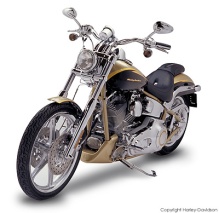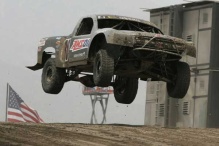Basic Concepts of Friction and Lubrication
Lubrication can be a daunting obstacle to someone unfamiliar with its basic concepts. Even someone with experience can be confused by the technology of current machinery combine with the multitude of lubrications available on the market today. Reviewing a few of the basic principles of lubrication can make it easier to see why proper lubrication is necessary in every application.
Friction
Webster defines friction as the "rubbing of one body against another," and as "resistance to relative motion
between two bodies in contact." Friction can be beneficial. As we overcome this resistance to motion between two
objects in contact, heat is generated. This heat is what warms our hands or starts a fire. Friction is also the
principle behind the braking systems we find on our automobiles. In fact, once we were able to get a car moving
there would be nothing to stop it without friction except the effects of gravity or other objects.
However, friction can also be our enemy. The heat generated as the result of friction can cause damage. Because
contact is required to generate friction, wear in the areas of contact can occur. This can lead to material
failures, overheating and the formation of wear deposits.
Although there are many ways to reduce friction, the most common way is through the use of a fluid or a semi-fluid
material. The key characteristic of such materials is that they are not readily compressible. Fluid and semi-fluid
materials allow us to minimize component contact or eliminate contact altogether. These fluids are commonly
referred to as lubricants.
Types of Lubrication
There are three types of lubrication or lubrication situations that can exists between two surfaces separated by a lubricant. Whether or not these situations occur is dependent upon the ability of the lubricant to provide adequate protection to the moving surfaces.
 |
| Sliding and rolling materials are separated by a thin film of lubricant held in place by pressure created between surfaces. |
When a fluid lubricant is present between two rolling and/or sliding surfaces, a thicker pressurized film can be
generated by the movement of the surfaces (at their respective velocities). The non-compressible nature of this
film separates the surfaces and prevents any metal-to-metal contact. The condition in which surfaces are
completely separated by a continuous film of lubricating fluid is commonly referred to as
Hydrodynamic or Full Fluid Film Lubrication.
Although hydrodynamic lubrication is the ideal lubrication scenario, in many situations it cannot be maintained.
Hydrodynamic lubrication is limited by the lubricant's viscosity, the rotation speed or RPM and by component
loading. An increase in speed or viscosity increases oil film thickness. An increase in load decreases oil film
thickness.
 |
| Lubricant film is too thin to provide total surface separation. Contact between surface asperities (or microscopic peaks and valleys) occurs. Friction production and wear production is then only provided through chemical additives. |
Boundary Lubrication is a condition in which the lubricant film becomes too thin to provide total surface
separation. This may be due to excessive loading, low speeds or a change in the fluid's characteristics. In such
a case, contact between surface asperities (or peaks and valleys) occurs. Friction reduction and wear protection
is then provided via chemical compounds rather than through properties of the lubricating fluid.
The third type lubrication situation is known as Elastohyrodynamic Lubrication (EHD or EHL). This
situation occurs as pressure or load increases to a level where the viscosity of the lubricant provides a higher
shear strength than the metal surface that it supports. As a result, the metal surfaces deform elastically in
preference to the highly pressurized lubricant. This increases the contact area and decreases the effectiveness
of the lubricant.
 |
| Pressure or load has increased to a level where the viscosity of the lubricant provides a higher shear than the metal surface it supports. As a result, the metal surfaces deform elastically, which increases the contact area and decreases the effectiveness of the lubricant. |
To minimize friction, an effective lubricant should be able to handle the pressures and speeds of the surfaces it will separate.
What Every Lubricant Must Do
Through the ability to minimize friction is the number one function of a lubricant, there are other major functions that must be considered. A lubricant is likely to also be required to:
Clean
A lubricant must maintain internal cleanliness by suspending contaminants or keeping contaminants from adhering to components.
Cool Moving Elements
Reducing friction will reduce the amount the heat that is generated and lower the operating temperature of the components. A lubricant must also absorb heat from the components and transport it to a location where it can be safely dissipated.
Prevent Contamination
The lubricant should act as a dynamic seal in locations such as the piston, piston ring and cylinder contact areas. This minimizes contamination by combustion byproducts (for example) in the lubricating system. Lubricants are also relied upon to support mechanical seals found elsewhere and to minimize external contamination and fluid loss.
Dampen Shock
The lubricant may be required to cushion the blows of mechanical shock. A lubricant film can absorb and disperse these energy spikes over a boarder contact area.
Transfer Energy
A lubricant may be required to act as an energy transfer median as in the case of hydraulic equipment or lifters in an automotive engine.
Prevent Corrosion
A lubricant must also have the ability to prevent or minimize internal component corrosion. This can be accomplished either by chemically neutralizing the corrosive products or by setting up a barrier between the components and the corrosive material.
Components of a Lubricant
Lubricants are generally composed of two groups of materials. The first is a base or stock fluid. This fluid
will make up 75 to 95 percent of the finished product. The most commonly used stocks today are derived from
petroleum crude oil. These stocks are also referred to as mineral or synthetic oils.
To this, base or stock chemical compounds may be added to enhance or impart new properties to the mineral oil.
These compounds are commonly referred to as additives. The use of such special chemical compounds is another way
to minimize friction and wear. The main role of these compounds is to offer protection when the lubricating fluid
cannot maintain component separation.
The Evolution of Synthetic Oils
As time goes on, the lubrication needs of equipment continue to change. As equipment becomes more
sophisticated, the demands placed upon the required lubricants become more severe. What may have been a preferred
lubricant in the past is likely to be totally unacceptable today.
The automotive industry is an excellent example of how demands on equipment have changed. The engines used in
today's cars require significantly more from a motor oil than they did only a few years ago.
For improved fuel economy, most cars are now using lighter oils. Yet the same cars have engines that put out more
power per cubic inch of displacement than ever before. To achieve this power level, designers are adding turbo
charges which expose the oils to higher temperatures and greater stress. Requirements for cleaner exhaust
emissions have contributed to higher levels of contaminants in the oil and also increased the oil's operating
temperature. By reducing the aerodynamic drag of new vehicles, designers have also minimized the amount of air
that flows over engines and drive trains, and caused operating temperatures to increase still further. Even with
all of these changes, designers are still requiring lubricants to last longer than they ever did before. The
demand for synthetic lubricants has never been higher.
How are Synthetic Oils Different?
Although the engineering of each synthetic base stock varies depending on he particular stock, synthetic are
generally made through a reaction process. This reaction process significantly improves the consistency of the
stock and its molecular uniformity. Mineral stocks, on the other hand, are obtained through a process of
distillation.
Distillation slightly limits the molecular diversity that may exist within the stock, but does not completely
eliminate nonessential molecular structures. This is important because unnecessary molecular structures produce
variations in the stock's performance. The ideal lubricant's chemical composition is one in which the molecular
construction is identical throughout, such as in a synthetic base stock. Because of the way synthetic stocks are
produced, they are molecularly uniform and contain significantly less undesirable materials than a mineral base
stock.
Molecular uniformity also affects the properties that each type of lubricant possesses. The properties of mineral
oils tend to vary due to inconsistencies in the crude from which they are obtained. The properties and
performance features of synthetics, on the other hand are very predictable. Once again, this is due to their
molecular uniformity.
AMSOIL synthetic lubricants are formulated to take advantage of superior properties of synthetic base stocks.
They provide excellent lubrication and wear protection and have been designed to resist the chemical breakdown
processes that limit the service life of conventional mineral-based oils.
We're now on Facebook!

Buy at wholesale price!
Preferred Customers buy at dealer cost and save 25%!

Not sure which products to get for your vehicle? Use the Vehicle Lookup Guide.

AMSOIL Distributor Opportunities
Start your own home business based on a proven superior product. Very low startup costs.

Sell AMSOIL products in your shop or store. Click here for information on AMSOIL retail accounts.

Does your business purchase lubricants for its equipment? Click for information about AMSOIL commercial accounts! Extend your equipment's life and reduce costs!
